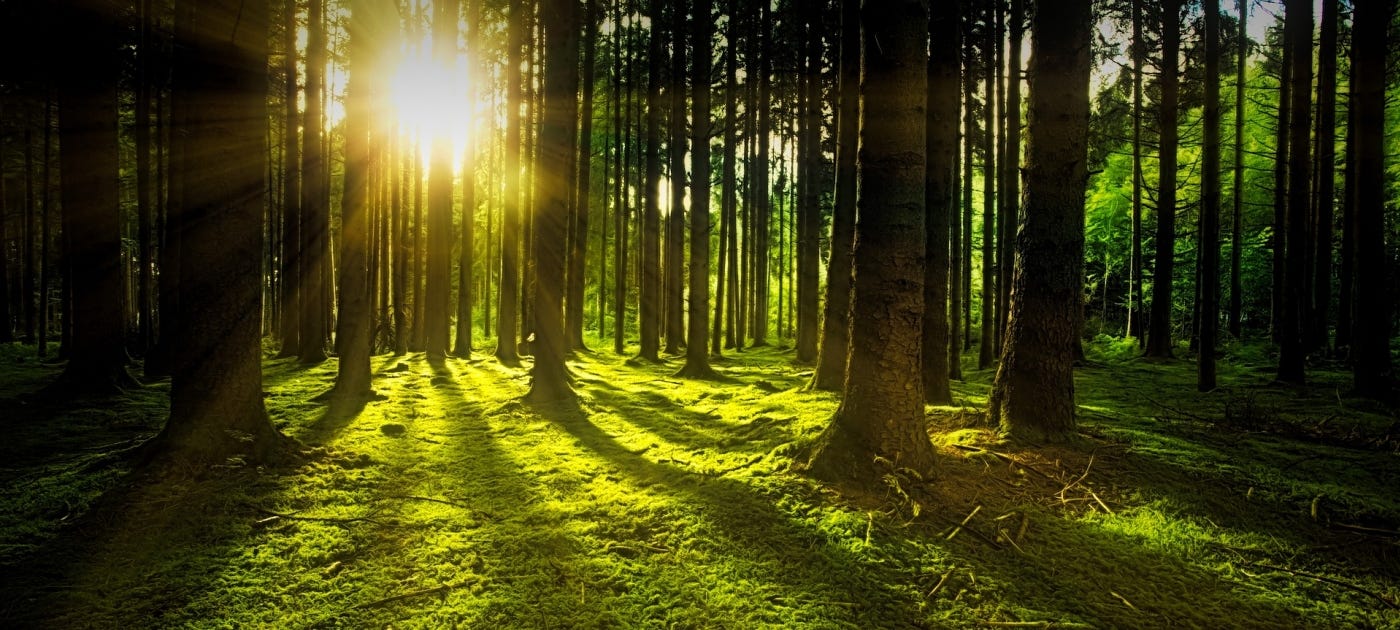How Carbon Pricing can save America’s forests from Global Warming
Economic incentives for landowners to keep their land in productive forests could be a valuable policy tool for reducing greenhouse gases

[Sept 20, 2021: Laura Oleniacz, North Carolina State University]
Without any kind of action or incentive to reduce emissions, it won't be enough to hit our climate goals. (Credit: Pixabay)
America has more than 800 million acres of forest and woods, and most of that land is privately owned. A new study finds that economic incentives for landowners to keep their land in productive forests could be a valuable policy tool for reducing greenhouse gas emissions.
The findings were drawn from an analysis of the role forestry and agriculture may play in reducing U.S. greenhouse gas emissions. Researchers modeled greenhouse gas emissions from the two sectors under five different socio-economic scenarios, including a scenario of high economic growth and fossil fuel dependence, and a scenario focused on sustainability.
The researchers also looked at the impact of paying a "carbon price" to incentivize landowners and farmers to store or reduce greenhouse gas emissions.
The researchers found that investing in forest management and planting trees on land that wasn't previously forested accounted for the largest share of greenhouse gas mitigation overall. However, strategies that lowered emissions from agriculture, like storing carbon in crop soils and capturing emissions from livestock systems, played an important role in periods of high economic growth.
"Forestry offered the best bang for your buck across all scenarios," said the study's lead author, Chris Wade, a graduate student in forestry and environmental resources at NC State and a research economist at RTI International. "Even in our baseline scenarios, where there's no carbon emissions mitigation policy, the U.S. forestry sector is remaining a net sink of carbon through mid-century."
The Abstract spoke with Wade and study co-author Justin Baker, associate professor of forestry and environmental resources at NC State, about the findings, which were published in the Journal of Forest Economics:
TA: What role did forestry play in carbon sequestration?
Wade: One of the big surprises from this study was that in the high demand scenario, where we had high GDP and population growth and increased reliance on fossil fuels, we saw a lot of investment in the forest industry and land base, leading to more carbon sequestration from the forestry sector. Forest landowners were making investments today so as that as demand wood products grows, 20 to 30 years from now, we would have a larger timber base to pull from to meet that demand. That's leading to large sequestration and storage of carbon within the U.S. forest land base.
Under the low demand growth scenario, we're seeing little growth in demand for forest products over time, so we see less incentive to invest in the forestry sector. In that scenario, there is projected to be the least amount of privately owned forest area, and a shift in land use to more production of crops and livestock. Not only do you have this declining forest storage, but you're also seeing an increase in emissions from livestock production. However, when you add in a policy incentive—essentially a government payment for landowners to keep their land in forest to store carbon, or to reduce emissions from agricultural production—that's when you see the big response in forestry under that low growth economic scenario. When you introduce policy to incentivize landowners to keep their land in forest, there is low value land that could be converted, or remain in forestry.
That says to us that if we're looking out into the future and trying to make policy decisions, if the economy is growing, the best way to improve carbon storage could come from promotion of long-lived forest products. If we are in a low economic growth scenario, or there's reason to believe there's a recession coming, the carbon payment approach might yield the best results.
TA: Why would high population and economic growth lead to greater sequestration of carbon in forests?
Baker: Often we think the only way to achieve or increase carbon sequestration from the land-use system is to pay people to preserve forests. But here, if you stimulate long-term market growth in a way that creates this incentive to invest in the resource base, investing in forest productivity has the benefit of increasing carbon sequestration rates. You may not need to pay for carbon sequestration directly if you can achieve it with other policies.
Our study does suggest that afforestation, or planting forest on land that isn't currently in forest, will play a big role, but we also found the way we manage our current forest base is really critical. With improved forest management, rotation considerations and shifting regional harvest patterns, we could really see that helping in the context of a national policy or private carbon offset market.
TA: What were important strategies that you saw for reducing emissions in agriculture?
Wade: The biggest opportunities are really in the livestock sector. So manure management activities like using methane digesters to reduce methane, which has high global warming potential.
TA: What impact did you see from carbon pricing?
Wade: Under scenarios where we have policies that encourage carbon sequestration, that's where we see that we can mitigate and store more carbon than we are emitting from the land-use sectors of forestry and agriculture. Without any kind of action or incentive to reduce emissions, it won't be enough to hit our climate goals.
TA: What is the potential for these two sectors to reduce total U.S. carbon emissions?
Wade: We looked at agriculture and forestry—we didn't look at transportation and energy generation. They're the two highest emitters nationally. When you start adding in other sectors, any small benefits gained could be lost. However, under carbon incentives, the U.S. forestry and agriculture sectors could be a net sequester of carbon.
For more environmental news stories check out our Green Impact section at The Brighter Side of News.
Like these kind of feel good stories? Get the Brighter Side of News' newsletter.
Tags: #Green_Good_News, #Carbon_Sequestration, #Global_Warming, #Forests, #Carbon_Pricing, #The_Brighter_Side_of_News
Joshua Shavit
Science & Technology Writer | AI and Robotics Reporter
Joshua Shavit is a Los Angeles-based science and technology writer with a passion for exploring the breakthroughs shaping the future. As a contributor to The Brighter Side of News, he focuses on positive and transformative advancements in AI, technology, physics, engineering, robotics and space science. Joshua is currently working towards a Bachelor of Science in Business Administration at the University of California, Berkeley. He combines his academic background with a talent for storytelling, making complex scientific discoveries engaging and accessible. His work highlights the innovators behind the ideas, bringing readers closer to the people driving progress.



